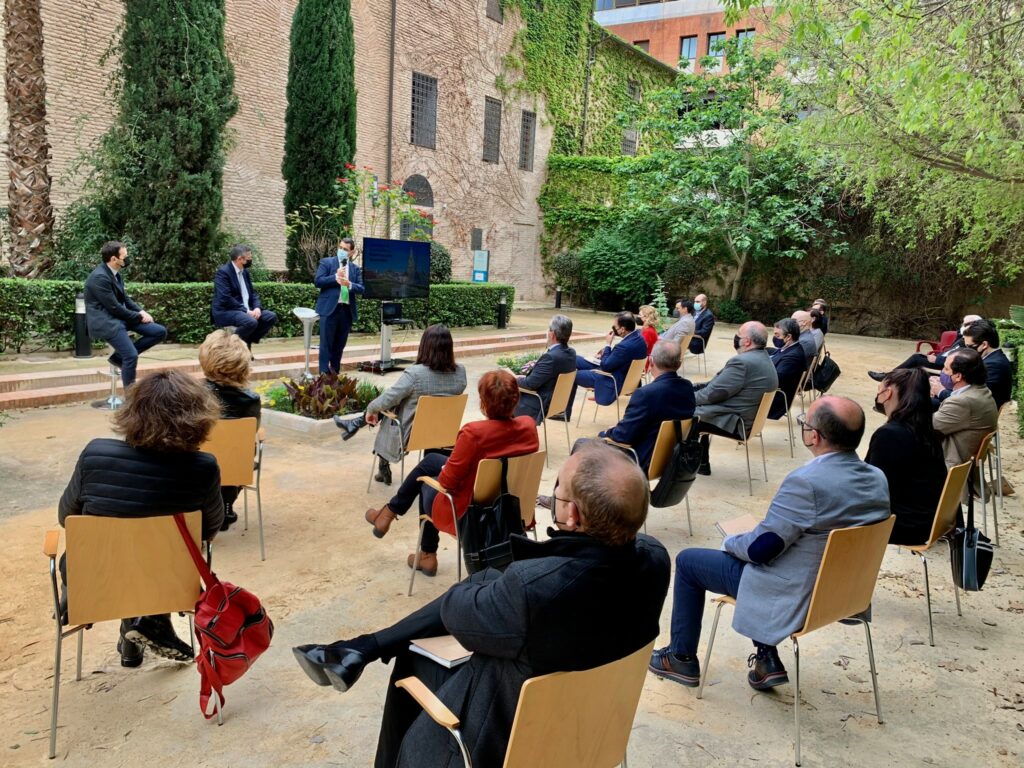The Autonomous Region presents the Action Plan of the Sustainable Construction and Architecture Strategy that will run up to 2030
12/04/2021
171 measures for the ecological transition of the regional construction model
The Autonomous Region has specified 171 measures that are necessary to carry out the ecological transition of the construction model in the Region of Murcia, the priority objective of which is to drive the transition towards the circular economy of that sector and improve the wellbeing of people.
These are contained in the Action Plan of the Sustainable Construction and Architecture Strategy (EACS), which was presented today by the Regional Minister for Development and Infrastructure, José Ramón Díez de Revenga, to key players in the construction industry and those who participated in designing this project, "which covers up to the year 2030, but is a living document in which new actions can be incorporated".
"The Regional Government is proposing a paradigm shift in the building process, with a concrete and viable roadmap that has been agreed with the sector, to progress towards a culture of sustainability in the construction process, which sets out what must be done and how it must be done".
Díez de Revenga stated that the roll-out of the EACS entails "an improvement in the control of finite resources and a minimisation of the impact of this activity on the planet, by implementing a new lifecycle for buildings and infrastructure; the increase in their durability and their capacity for adaptation; and the development of more flexible urban planning, and the promotion of urban planning policies that encourage greater eco-efficiency".
He highlighted that "this transition is only possible if it addresses all of the phases of the building process: production, planning and design, construction, use and end of life of the buildings, all from the perspective and with the support of a sustainable city model".
He recalled that the Strategy is aligned with the United Nations Sustainable Development Goals (SDGs) and the European Union's Urban Agenda 2030.
Five axes of action
The measures are centred around five axes that range from the qualification and training of human capital through to the promotion of research and innovation in the building process, as well as encouraging actions to improve quality of life in urban spaces. It also includes the drive for a transition to a more sustainable building model and, as the fifth axis, placing citizens at the centre of the new model.
The minister emphasised that his department has already executed some of the actions laid out in the EACS, such as legislation changes to encourage Nature-based Solutions (NbS) in new developments, and the UPCT study on applying Sustainable Drainage Systems (SUDS) in the area around the Mar Menor with the aim of preventing floods and fighting against climate change.
A study is also being carried out on the implementation of living roofs on the regional public building stock, as well as a pilot project in Alcantarilla.
"The involvement of local administrations is essential for the success of this Strategy, which is why we have created a coordination panel with town councils, as a meeting and collaboration space in which local leaders and qualified staff participate," declared the minister.
He highlighted the importance of the EACS website which boosts the dissemination of the actions proposed by the Autonomous Region for the ecological transition in construction
Díez de Revenga recalled that the strategy is the result of "an important participatory process" and that for it, a technical panel was created, which included representatives of the regional and local administrations, teaching and research staff, the business sector, professionals and technicians, and citizen and user representatives.

Photography: Presentation of the Action Plan of the Sustainable Construction and Architecture Strategy
Download the EACS Action Plan at Download Links
